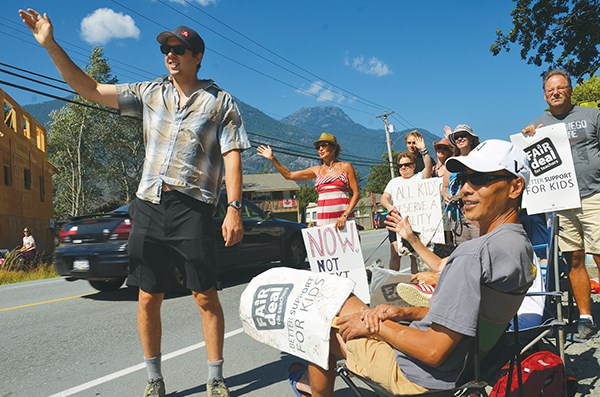The recent decision by the Supreme Court of Canada to hear an appeal from the B.C. Teachers’ Federation (BCTF) could be pricey for school districts.
After the union won court cases at lower levels, the B.C. Court of Appeal overturned decisions that would permit class size and composition to be returned to what had been stipulated in contracts. The union responded by applying to the Supreme Court of Canada.
The dispute between the BCTF and the province was one of the key sticking points behind the 2014 teachers’ strike.
Following last week’s decision, some media reports suggested a decision in favour of the union’s position could force the province to return to former class size and composition levels, a costly change that could run well into the millions for the larger districts in the country.
Estimates put the bill at $45 million for the Surrey School District, $21 million for Langley, $11 million for Abbotsford, $6.5 million for Central Okanagan and $6 million for Kamloops.
A BCTF spokesperson confirmed these numbers came from selected school districts after some superintendents were asked to provide estimates for the court case during the B.C. Court of Appeal phase.
School District No. 48 superintendent Lisa McCullough confirmed that Sea to Sky was not one of the districts asked to submit estimates.
“We don’t have any specific numbers ready for our school district. Obviously, there would be an impact,” she said.
She expects that the district would meet class ratios in question in some areas, but in others it would require additional staffing.
“If the decision was made, we would have to do an analysis,” she said.
McCullough also said the district holds contingencies for liabilities in some areas, which its finance committee reviews each year, but additional funding to restore class ratios is not one of these areas.
For his part, Steve Lloyd, president of the Sea to Sky Teachers’ Association, is concerned the province will claim there is no money to fund additional staff.
“They’ve shifted the money from education and health care to other interests,” he said, citing Conference Board of Canada estimates point of subsidies to oil and gas of $4 to 5 billion a year in B.C.
“I don’t see any need to raise anybody’s taxes,” Lloyd said. “We do have the money. We’ve just chosen to spend it somewhere else.”
Since 2002, the province, he said, has been well below the average funding per student compared with the rest of Canada. On a personal level, Lloyd said the job he was doing prior to representing district teachers had been done by three people five years earlier.
He also points to a letter late last year from five main stakeholders in education, including the school trustees’ association and the teachers’ union, asking the province to abide by its own bipartisan committee recommendation to restore funding.
“This isn’t just a BCTF position,” he said.
If funding is restored, Lloyd sees the top priorities as funding for special needs students, more teacher-librarians, more counsellors and smaller class sizes.
“Small class size and more attention is exactly what the private schools advertise,” he said.
Lloyd is not sure which way the highest court will lean when it renders a decision, likely late this year, but he’s pleased they have agreed to hear the case.



